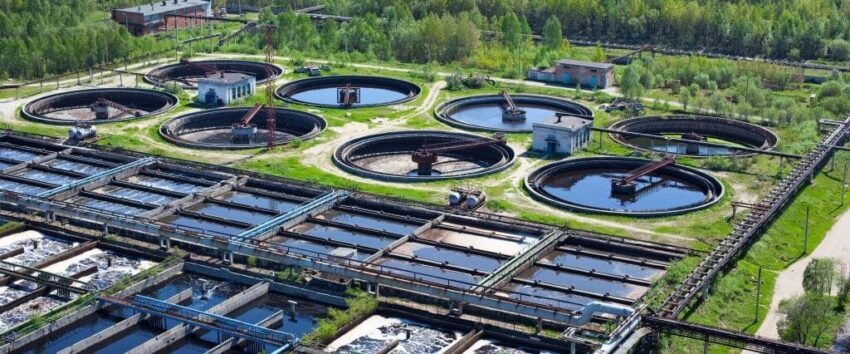
Introduction
Wastewater treatment is the process of removing contaminants from wastewater so that it can be safely returned to the environment. Wastewater can contain a variety of contaminants, including human waste, chemicals, and bacteria. If wastewater is not treated properly, it can pollute our waterways and cause serious health problems.
There are a number of different types of water treatment processes manufactured by water treatment company in the UAE. The type of process that is used will depend on the type of wastewater that is being treated and the desired level of treatment.
What are the different types of wastewater treatment processes?
Physical Treatment Processes
Physical treatment processes are the first step in most wastewater treatment systems. These processes are used to remove large particles and other materials from wastewater.
Some of the most common physical treatment processes include:
- Screening: Screening is used to remove large particles, such as rags, sticks, and rocks, from wastewater. Screening is typically done using a series of screens with different mesh sizes. The screens are arranged in a series so that the wastewater flows through them in a stepwise fashion. The larger particles are caught on the first screen, the smaller particles are caught on the second screen, and so on.
- Grit removal: Grit removal is used to remove small particles, such as sand and gravel, from wastewater. Grit removal is typically done using a grit chamber. A grit chamber is a tank that is filled with gravel. The wastewater flows through the grit chamber, and the grit particles settle to the bottom of the tank. The grit particles are then removed from the tank and disposed of.
- Flocculation: Flocculation is used to clump together small particles so that they can be more easily removed. Flocculation is typically done using a flocculator. A flocculator is a tank that is filled with chemicals that cause the small particles to clump together. The wastewater flows through the flocculator, and the clumps of particles settle to the bottom of the tank. The clumps of particles are then removed from the tank and disposed of.
- Sedimentation: Sedimentation is used to allow heavier particles to settle out of wastewater. Sedimentation is typically done using a sedimentation tank. A sedimentation tank is a tank that is designed to allow particles to settle out of wastewater. The wastewater flows into the sedimentation tank, and the heavier particles settle to the bottom of the tank. The clear water is then removed from the top of the tank and sent to the next step in the treatment process.
Chemical Treatment Processes
Chemical treatment processes are used to remove specific contaminants from wastewater. Some of the most common chemical treatment processes include:
- Neutralization: Neutralization is used to adjust the pH of wastewater. The pH of wastewater is important because it affects the effectiveness of other treatment processes. Wastewater that is too acidic or too alkaline can be harmful to the environment and can also damage equipment in the wastewater treatment system. Neutralization is typically done using a chemical called lime. Lime is added to the wastewater until the pH is adjusted to the desired level.
- Oxidation: Oxidation is used to remove organic matter from wastewater. Organic matter is a type of contaminant that can cause problems in wastewater treatment systems. Oxidation is typically done using a chemical called chlorine. Chlorine is added to the wastewater, and the organic matter is oxidized and removed from the wastewater.
- Chlorination: Chlorination is used to kill bacteria in wastewater. Bacteria can cause problems in wastewater treatment systems and can also cause health problems if they are not removed from wastewater. Chlorination is typically done using a chemical called chlorine. Chlorine is added to the wastewater, and the bacteria are killed.
Biological Treatment Processes
Biological treatment processes use living organisms to remove contaminants from wastewater. Some of the most common biological treatment processes include:
- Activated sludge: Activated sludge is a process that uses bacteria to break down organic matter in wastewater. Activated sludge is typically done in a tank called an activated sludge tank. The wastewater flows into the activated sludge tank, and the bacteria in the tank break down the organic matter in the wastewater. The treated wastewater is then removed from the tank and sent to the next step in the treatment process.
- Trickling filter: Trickling filter is a process that uses a bed of media to support bacteria that break down organic matter in wastewater. Trickling filters are typically done in a tank called a trickling filter tank. The wastewater flows over a bed of media, such as rocks or plastic, and the bacteria in the media break down the organic matter in the wastewater. The treated wastewater is then removed from the tank and sent to the next step in the treatment process.
Advanced Treatment Processes
Advanced treatment processes are used to remove very small particles and other contaminants from wastewater. Some of the most common advanced treatment processes include:
- Membrane filtration: Membrane filtration is used to remove very small particles from wastewater.
- Ultrafiltration: Ultrafiltration is used to remove even smaller particles from wastewater.
- Nanofiltration: Nanofiltration is used to remove very small particles and dissolved substances from wastewater.
How the Different Types of Wastewater Treatment Processes Work
The different types of wastewater treatment processes work in a variety of ways. Some of the processes, such as screening and grit removal, are physical processes that remove large particles from wastewater. Other processes, such as flocculation and sedimentation, are chemical processes that clump together small particles so that they can be more easily removed. Still other processes, such as activated sludge and trickling filters, are biological processes that use living organisms to break down organic matter in wastewater. Finally, advanced treatment processes, such as membrane filtration, ultrafiltration, and nanofiltration, are used to remove very small particles and other contaminants from wastewater.
The type of process that is used will depend on the type of wastewater that is being treated and the desired level of treatment. For example, screening and grit removal are typically used as the first step in most wastewater treatment systems, as they can remove large particles that could damage other equipment in the system. Flocculation and sedimentation are often used to remove smaller particles, while activated sludge and trickling filters are used to break down organic matter. Advanced treatment processes, such as membrane filtration, ultrafiltration, and nanofiltration, are used to remove very small particles and other contaminants that may not be removed by other processes.
Conclusion
There are a number of different types of wastewater treatment processes. The type of process that is used will depend on the type of wastewater that is being treated and the desired level of treatment.
Wastewater treatment is an important part of protecting our environment and public health. By removing contaminants from wastewater, wastewater treatment can help to keep our waterways clean and safe.

Aimee Garcia is a Marketing Consultant and Technical Writer at DailyTechTime. She has 5+ years of experience in Digital Marketing. She has worked with different IT companies.

